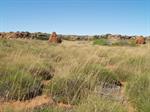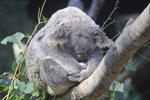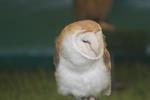Managing animals in their natural environment is an important environmental issue today.
This course  provides you with a detailed insight into wildlife management. Over the course of nine lessons, you will work through the course with helpful and experienced support from our highly qualified tutors.
provides you with a detailed insight into wildlife management. Over the course of nine lessons, you will work through the course with helpful and experienced support from our highly qualified tutors.
This course provides you knowledge and information that is useful for a career working with wildlife.
Start Date
You can start at a time to suit YOU.
Duration
The course requires 100 hours of study. How long this takes will depend on you and how much time you have available for studying. If you could study for ten hours per week, then you could complete the course in ten weeks, for example.
COURSE STRUCTURE
There are 9 lessons as follows:
1. Introduction to Wildlife Management
- What is Wildlife Management
- Approaches to Wildlife Management (Preservation, Conservation, Management)
- Purpose of Wildlife Management
- Goals
- Decision Making (Who makes decisions, Making good decisions)
- Needs of Wildlife
- What’s a Good Habitat
- Limiting factor
- Carrying capacity
- Landscape Fragmentation
- Habitat Diversity
- Arrangement
- Biological Control
- Integrated Pest Management
2. Wildlife Ecology
- Ecology (Mutualism, Commensalisms, Competition, Predation, parasitism, herbivore)
- Behavioural Ecology
- Population Ecology
- Community Ecology
- Ecosystem Ecology
- Interactions within a Community
- Competition
- Predation
- Parasitism
- Commensalism
- Mutualism
- The Food Web (Derital Web, Grazing Web, Trophic Levels)
- Energy Flow
- Imbalances
 3. Wildlife Habitats
3. Wildlife Habitats
- Introduction
- Classification of Habitats
- Biomes, Ecosystems, Microclimates
- Timbered Biomes (Boreal Forest/ Taiga, Temperate Forest, Tropical Forest, Woodland)
- Scrubland
- Tropical Savannah
- Temperate Grassland
- Arctic Tundra
- Alpine
- Semi-desert
- Desert
- Man Made Biomes (Urban, Agricultural)
- Wet Biomes (Mangrove, Rivers, Benthos, Pelagic, Continental Shelf, Coral Reef,
- Animal Use of Features in Biomes (Trees, Logs, Surface Rocks and Ground Cover, Creeks, Wetlands and Dams)
- Case Studies
- Changes to Habitats (Physical, Biological, Pollution)
- Water for Wildlife
- Site Water Points
- Managing Trees
- Deforestation
- Afforestation
4. Population Dynamics
- Populations
- Birth or Fecundity Rate
- Death or Mortality Rate
- Growth Rate
- Life Tables
- Cohort or Dynamic Life Tables (Age Specific)
- Static or Time Specific Life Tables
- Rodents
- Squirrels
- Rabbits
- Mosquitoes
- Grasshoppers
- Case Studies of different animals in different countries
 5. Carrying Capacity
5. Carrying Capacity
- Introduction
- Exponential Population Growth
- What is Carrying Capacity
- Fisheries stock management (stock Identification, assessment, biomass)
- Stock Management Methods
6. Wildlife Censuses
- Introduction and census types
- Total Counts
- Sampling (Simple Random, Stratified Random, Systemic, Two Stage, Double sampling)
- Accuracy vs Precision
- Bias Errors
- Aerial Surveys
- Trapping
- Transects
- Indirect Methods
- Mark-Recapture method
- Roadside and Call Counts
- Mapping
- Sampling methods for specific types of animals (ie. Fish, Amphibians, Reptiles, Birds, Invertebrates, Mammals etc.)
- Animal Ethics
- Case Study
7. Wildlife Management Techniques
- Habitat Modification
- Fire
- Vegetation Management
- Predator Control
- Habitat Features
- Seeding
- Population Monitoring
- Captive Breeding and Release
- Culling and Cropping
- Control of pest or undesirable wildlife species
- Control Objectives
- Effects of Control
- Control Techniques (Manipulating mortality, fertility, Genetic Engineering, indirect methods)
8. Wildlife Management Law and Administration
- Policy and Wildlife Law
- International Environmental Law
- Treaties
- International Customary Laws
- Hard vs Soft Law
- Domestic/National Law
- Evolving Domestic Law
- Sources of Legislation
- Environmental Ethics
- Enforcement
-
9. Wildlife Management Case Study Research Project
Problem Based Learning Project with following aims:
- Identify the objectives of a management program for an endangered species.
- Determine appropriate techniques for carrying out a census of an endangered species.
- Identify techniques for increasing the population of the endangered species.
- Identify pest species and their undesirable effect on the endangered species of bird.
- Identify techniques for reducing the undesirable impacts of the pest species on the endangered bird.
- Present a management plan in a form that is appropriate for use by wildlife worker.

AIMS
On successful completion of the course you should be able to do the following:
- Develop a concept of how man manages wildlife populations in different situations around the world.
- Understand and discuss the principles of wildlife ecology.
- Understand wildlife habitats and their importance to managing wildlife.
- Explain how populations of any one species change and adapt to variations in their environment.
- Understand carrying capacity and its importance in managing wildlife populations.
- Explain a range of different methods used to determine the number of individuals in a wildlife population.
- Discuss a range of different wildlife management techniques.
- Explain potentials and limitations of legal and administrative initiatives, in the pursuance of more effective wildlife management.
- Examine a specific wildlife management case of interest to the student.
WHAT THE COURSE COVERS
Here are just some of the things you will be doing:
- Contact (either in person, email or by telephone) an organisation involved in wildlife management such as a National Park, wildlife reserve, zoo, etc to research their wildlife management program.
In your locality, find out about one pest species of wildlife and one endangered or threatened species of native wildlife. Research what happened to make these animals pests or endangered.
- Visit a natural area in your locality and observe the organisms in the area and their interactions with each other and the environment.
- Explain what trophic levels are and how energy flows between them.
- Define habitat, biome, vegetation formation and feeding radius.
- Visit a zoo, wildlife park, game reserve, pet shop, fauna sanctuary or other place where wild animals are kept in captivity to observe the animals in their captive surroundings and compare these with their native surroundings.
- Identify a predator-prey relationship between two species in a local ecosystem and make predictions about changes to this relationship.
- Research the difference between r and K strategists in animals.
- Design a wildlife survey using a suitable sampling technique. Write this survey up as a mini scientific report containing an Abstract/Project Summary, Methods and materials section, Results/Discussion and Conclusion.
- Research the success of one wildlife program where wildlife have been bred in captivity and then released.
- Draw up a table that lists the advantages and disadvantages of allowing hunting to proceed in game parks where the animals being hunted are native to the area.
- Contact a wildlife management agency in your area to determine the relevant local, regional, national and international laws that apply to wildlife in your locality.
- Prepare a report of no less than 1000 words on a population of animals surveyed during the course.

The Barn Owl (Tyto alba) and its habitat requirements in the United Kingdom
The current Barn Owl population in the UK is thought to be around 4000 pairs. The population has been significantly reduced since the late 1800s with the mechanisation of farm machinery and increase in human population size leading to more intensive land development. These factors, along with the use of pesticides such as DDTs and rodenticides have led to the significant reduction in population numbers.
The preferred prey species of the Barn Owl is the field vole (Microtus agrestis), but they also prey on shrews and field mice. The presence and quantity of these species will determine the quality of habitat for Barn Owls which is generally open habitat with a good litter layer such as rough grassland, hedgerows, woodland fringes, drainage ditches and agricultural land.
The hunting area of a pair of Barn Owls is usually around ½ mile during the breeding season and 2 miles in winter (due to the reduced amount of prey available). This will translate to an area of around 14-21 hectares in arable farming land and up to 31-47 hectares in pastoral areas.
Owl pairs will generally require 1 breeding site and 1-2 permanent roosting sites, along with other opportunistic roosting sites. They can use man-made structures such as barns, sheds and churches for nesting and roosting. Barn Owls are sedentary by nature, so once they have established a home range they are unlikely to leave it.
The need for breeding and roosting sites and hunting grounds which are rich in prey are a limiting factor to the survival of the Barn Owls. If Barn Owls have access to good habitat they are more likely to survive the less hospitable winter, lay more eggs in the spring and the survival chances of young will increase. Sadly, the reverse will occur in poor habitat.
Career Opportunities
Study alone can never guarantee career success; but a good education is an important starting point.
Success in a career depends upon many things. A course like this is an excellent starting point because it provides a foundation for continued learning, and the means of understanding and dealing with issues you encounter in the workplace.
When you have completed an ACS course, you will have not only learnt about the subject, but you will have been prompted to start networking with experts in the discipline and shown how to approach problems that confront you in this field.
This and every other industry in today’s world is developing in unforeseen ways; and while that is unsettling for anyone who wants to be guaranteed a particular job at the end of a particular course; for others, this rapidly changing career environment is offering new and exciting opportunities almost every month.
If you want to do the best that you can in this industry, you need to recognise that the opportunities that confront you at the end of a course, are probably different to anything that has even been thought of when you commence a course.
Careers in Wildlife Management
First, regarding Wildlife Management as a career, you are probably aware that it is a highly competitive field, with many more applicants for jobs than the job market can absorb. Therefore, many nature parks, zoos and other employers can and do set quite demanding requirements for interested persons. In most situations, they require you to demonstrate your commitment to working with animals and your psychological suitability for such work through volunteering. This often applies to those with qualifications as well as those without, as not everyone who wants to work with animals has the personality or personal qualities for such work.
Jobs in wildlife management may only be offered to volunteers and not advertised, and it is often the case that only those volunteers willing to work on a casual basis or on call will gain the jobs anyway, which can make it very difficult for volunteers who cannot afford to give up stable positions.
A qualification will certainly make you more attractive as a recruit, but it is usually not enough to gain you a job in this field, unless you are qualified for, and seeking a job that requires particular skills and knowledge, such as veterinary science. Our courses written by writers with experience and qualifications in this field, who have a good understanding of what is needed.
The reality of the situation is that even a university degree in this field does not guarantee work in the field, either in the U.K. or in Australia. In fact, one of our Australian tutors who has a university degree in Wildlife Management has not yet been able to find work in that field and is doing volunteer work to help open doors.
As for job opportunities in this field, we do have students who have entered this field on the basis of our courses, but they were particularly motivated and willing to work for long periods on their own or on voluntary basis.
Others have ended up working in parks where they find themselves using more practical skills such as horticulture, constructing paths and working with machinery.
This does not present a clear picture of your prospects, but this is not a field that offers clear career paths, and that requires great personal initiative. Or you might just be fortunate enough to be in the right place at the right time and bypass the usual difficulties.
WHAT NEXT?
Register to Study -Go to panel toward top of this page (right column)
or
Get Advice -Use our FREE COUNSELLING SERVICE to contact a tutor
CLICK TO CONTACT US